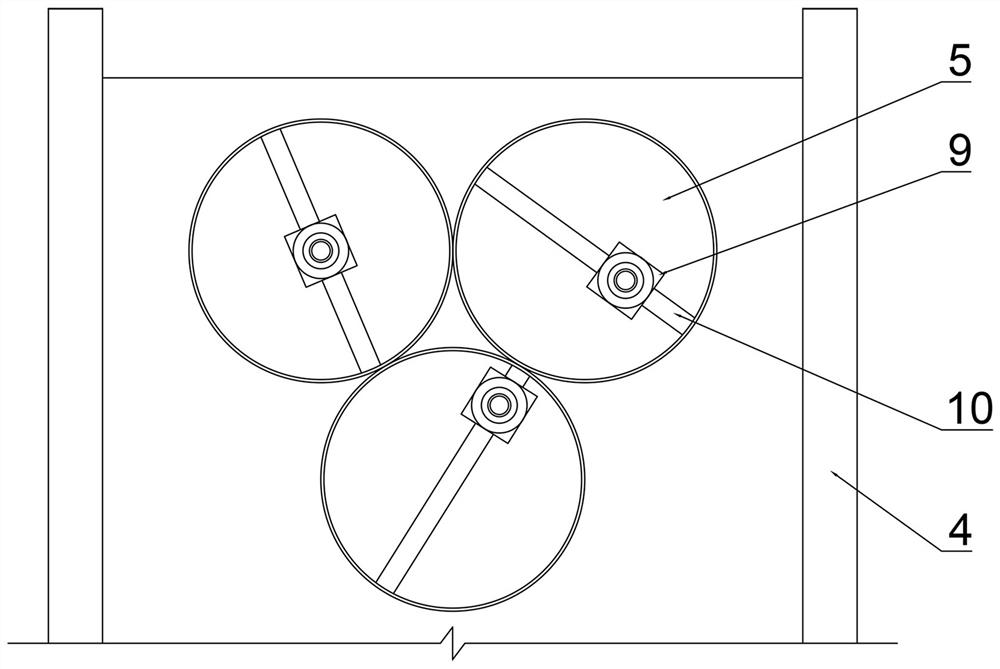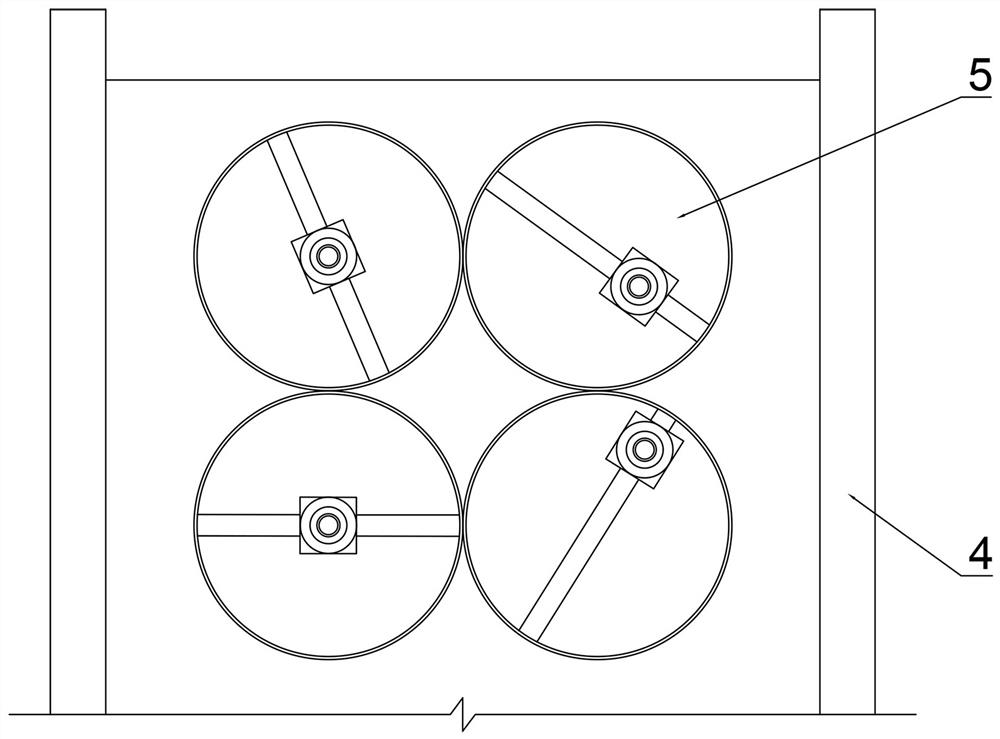The difference in dose will affect the effect of radiation therapy
[0005] At present, there are many ideas to solve the impact of respiratory exercise on lung cancer radiotherapy, mainly through the following methods: 1. Free breathing optimization plan target volume (PTV): according to the movement of most tumors of the same disease and the positioning error, etc. Uncertain factors, use the principle of probability to determine how much CTV (clinical target volume)-PTV gap to use, or set the size of the gap according to the tumor motion and setup error of a specific patient, under the guidance of modern imaging technology, such as X Line simulator fluoroscopy, PET (positron emission tomography)-CT (computerized tomography), etc., can obtain accurate tumor anatomical images, further coordinate multi-field irradiation, and can effectively use radiation therapy technology to treat tumors. But the existing radiotherapy equipment can't adapt to the requirements of this method; 2. Respiratory control: Since the patient's lungs hardly move during breath-holding, by controlling the patient's breathing, the patient's lungs can be controlled within a specific period of time. Respiratory movement is reduced to a very low level, and the time period for radiation therapy can be effectively provided by the patient's voluntary deep inhalation breath holding (DIBH) or active breathing control (ABC), but the maximum The problem is that quite a lot of patients cannot tolerate it; 3. Respiratory gated radiotherapy: patients can breathe freely during the treatment process, and control the respiratory signal or other signal changes that can indirectly reflect the tumor location through the gating device to monitor the respiratory cycle The switch of the treatment ray, so that the ray occurs only in a certain phase of the respiratory cycle. The biggest advantage of the respiratory gating is that the patient can breathe freely, and the radiation treatment is accurate. The disadvantage is that the corresponding gating equipment is required, and the gating signal is required. The monitoring of the tumor location is extremely accurate. In addition, the simulation time and treatment time required are very long; 4. Tracking radiotherapy: similar to the principle of gated radiotherapy, the patient can breathe freely during the treatment process, and the breathing cycle is monitored by tracking equipment The position of the tumor in the tumor is changed to control the switch of the treatment radiation, so that the radiation occurs only when the tumor is within a certain position. Markers are implanted in or near the tumor and removed after surgery. In addition, with breathing movement, the tumor may deform or rotate, but the marker will not, so it may not be able to adapt to some tumors in specific positions and specific motion states;5 .Four-dimensional radiotherapy: During the simulation, planning and implementation of treatment, not only the spatial three-dimensional positions of tumors and normal organs, but also their temporal changes are considered, so as to solve the problem of movement of tumors and normal organs at the level of planning optimization In other words, it is image-guided radiotherapy (IGRT), which does not control the patient's breathing, but only monitors the patient's breathing to control the scanning of the four-dimensional cone beam (cone beam) CT. Time Each phase collects the respective respiratory images, and then outlines the respective target areas with the images of each phase, and also monitors the patient's breathing during radiotherapy. Different respiratory phases adopt different irradiation plans. Theoretically, the four-dimensional radiotherapy technology can be extremely The accuracy of radiotherapy is greatly improved, and radiotherapy takes a short time. However, the development of four-dimensional radiotherapy technology requires the support of imaging technology and equipment. The existing technical solutions are also explored in various directions, and the advantages and disadvantages are obvious.
[0006] The existing patent "Lung Cancer Radiation Therapy Tumor Movement Follow Shield System", the patent number is 201310479309.9 discloses an auxiliary device, which is based on the concept of four-dimensional radiotherapy, but is more inclined to track radiotherapy, by reserving an adjustable shield on the shield Holes, the shielding holes are automatically adjusted according to the tumor contour at that time. This scheme can reduce the possibility of accidental radiation damage in radiotherapy to a certain extent, but the marking of the tumor target area is carried out in vitro, which naturally reduces the accuracy of radiotherapy. On the other hand, the dose in the tumor area is more difficult to adjust, and it is easy to have residues. Although the operation seems to reduce the difficulty of surgery, it greatly weakens the effect of radiotherapy
The existing patent "Robot Non-Invasive Radiation Therapy System", the application number is 201310115139.6, discloses a device that realizes the intelligent tracking of moving tumors by placing an electromagnetic generator on the tumor tissue in the body, which belongs to the tracking radiation therapy program under the guidance of images , as mentioned above, it needs to be implanted and removed by invasive surgery. When facing the deformation and rotation of tumor tissue, the positioning may be shifted, which reduces the efficiency and therapeutic effect of radiation therapy to a certain extent.
 Login to View More
Login to View More  Login to View More
Login to View More 


